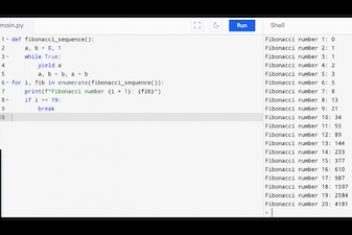When building a kickass 3D game, you’ve got options galore for game dev languages. Each one’s got its own special skills and perks, and the best pick for you depends on your project’s needs and goals. This tutorial will give you the lowdown on some of the top 3D game programming languages and show you how to pick the one that’s perfect for your gig.
C++:
C++ is a fast and efficient programming language that’s a go-to for game dev. It’s used to make some of the best games out there and is considered the top choice for game development. Here’s the deal with C++ for 3D games:
The Pros:
- Speedster: C++ is a compiled language, so it runs faster and smoother than interpreted languages like Python or Ruby. This is especially important for 3D games that need a lot of computing power to show off sick graphics and animations.
- Popularity contest winner: C++ is one of the most used programming languages for game development and is used by top studios. That means you’ll have plenty of resources and support.
- A big team behind you: C++ has a huge community of developers who are always around to help if you need it.
The Cons:
- Steep climb: C++ has a more complicated syntax and a steeper learning curve than some other programming languages, so it might be tough for beginners.
- Takes longer to code: C++ requires more code to do the same thing as some other languages, which can take longer to write and fix.
Example 3D games built with C++:
- Fortnite: Fortnite is a popular battle royale game that is built using C++.
- Doom: Doom is a classic first-person shooter game that is built using C++.
Read: How to improve the performance of games in Linux using GameMode
C#:
C# is a popular, user-friendly programming language that’s a hit in game dev. It’s known for being easy and flexible and is often used with Unity 3D game development. Let’s break down why C# is a good choice for 3D games:
The Pros:
- Easy peasy: C# has a simple and straightforward syntax, making it a breeze to learn and use, especially for beginners or new game dev teams.
- Strong community: C# has a huge community of developers who are always around to help if you need it.
- Unity power: C# is the main language used with the Unity game engine, which is a popular choice for building 3D games. This makes it simpler to build and launch your game with Unity.
The Cons:
- Slower speed: C# is an interpreted language, so it can run slower and not as efficiently as compiled languages like C++. This might not be a big deal for smaller or less complicated games, but could be a problem for bigger or more resource-intensive projects.
Example 3D games built with C#:
- Monument Valley: Monument Valley is a popular puzzle game that is built using C# and the Unity game engine.
- Subnautica: Subnautica is a survival game set in an underwater world. It is built using C# and the Unity game engine.
See this detailed comparison of C# VS C++ provided by a professional programmer.
Read: Best Methods for QA Testing Games
Python:
Python’s a jack-of-all-trades programming language that’s big in web development, science, and data crunching. It’s known for being easy to read and understand, and it has a huge, active community of developers.
The perks :
- Big standard library: Python comes with a massive standard library that’s loaded with all sorts of tools and modules, which can come in handy when building a 3D game.
- Plenty of add-ons: There’s tons of third-party libraries and frameworks for Python, like Pygame and Panda3D, that can help you build your game faster and smarter. Strong support system: Python has a solid and active community of developers that you can turn to if you run into any issues or have questions about your code.
The downsides :
- Slower speeds: Since Python’s an interpreted language, it can run slower than compiled languages like C++. This might not be a big deal for smaller or simpler games, but it could be a problem for larger, more demanding projects.
Example 3D games built with Python:
- Civilization IV: Civilization IV is a popular turn-based strategy game that is built using Python.
- Eve Online: Eve Online is a massively multiplayer online game that is built using Python.
Read: Can Your Enterprise choose Python for Software Development?
Java
Java is a language used for game dev, especially when it comes to making 3D games. It’s got a ton of game engines and libraries available that make creating 3D games a breeze.
Read: The best Disney games on mobile and Switch in 2023
Why Java’s good for 3D games:
- Platform-agnostic: Java’s compiled, but it runs on a virtual machine instead of your computer’s hardware. That means it can run on any device with a Java Virtual Machine (JVM) installed, making it a great option for cross-platform development.
- Object-oriented design: Java’s fully object-oriented, which means it has a strong emphasis on encapsulation, inheritance, and polymorphism. That makes designing and maintaining complex 3D games a lot easier. Huge developer community: Java’s got a huge, active community of developers. That means there’s a ton of resources out there to help you learn the language and get answers when you need them.
- Good speed: Java’s performance is good compared to other interpreted languages, and it’s gotten even better recently with the introduction of the just-in-time (JIT) compiler. Popular: Java’s a popular language, so it’s got a big user base and a ton of tools and libraries available. That makes it easier to find developers with Java experience and libraries to help you develop your game.
Why Java’s not-so-good for 3D games:
- Speed: Java’s generally considered slower than languages like C++, which can make it a less-than-ideal choice for resource-intensive 3D games.
- Garbage collection: Java uses a garbage collector to manage memory, which can sometimes cause pauses in the game. You can minimize this with good programming, but it can still be a problem.
- Limited platform support: Java’s widely supported on many platforms, but it might not be available on all platforms. That can limit who can play your game.
- Steep learning curve: Java can be a tough language to learn, especially for new programmers. It can take time to become proficient and develop complex 3D games.
Some popular examples include jMonkeyEngine, LibGDX, and Java 3D. Java has the advantage of being a cross-platform language, so games developed using Java can be run on a variety of platforms, including Windows, Mac, Linux, and Android.
Read: Best Linux games
Lua
Lua is a programming language that’s often used in video games and other apps. It’s light, easy to learn, and works great with C or C++ for creating 3D games. But there are some downsides to using it too.
Pros of using Lua for 3D games:
- It’s simple enough for anyone, whether you’re new to coding or a seasoned pro.
- Lua is lightweight and doesn’t take up much space, making it perfect for games on mobile devices or consoles.
- It can be easily integrated into other systems and apps.
- It’s fast and efficient, perfect for real-time 3D games.
- There’s a big, active community of developers who can help you out when you need it.
Cons of using Lua for 3D games:
- Not all 3D engines support Lua, so your options are limited compared to C++ or C#.
- Lua doesn’t have built-in support for 3D graphics, so you’ll need to use extra libraries or plugins.
- It might not be the best choice for big, complex game projects.
- The community of developers working with Lua for game dev is smaller than other languages, so resources and support might be harder to find.
There are several game engines and frameworks that support Lua as a scripting language, such as Love2D, Corona SDK, and Gideros Mobile. In addition, many popular 3D games, such as World of Warcraft and Roblox, have used Lua in their development.
Read: 7 Reasons Why Gaming Is Getting More Popular
Conclusion:
Choosing the right programming language to build a 3D game can be a tough call. It all comes down to what you need and what you’re trying to achieve. Think about the game’s performance, how easy it is to use, the resources and support available, and whether it integrates well with game engines. With the right choice, you can put together a sick 3D game that your players will love and that meets your project’s needs.
If you like the content, we would appreciate your support by buying us a coffee. Thank you so much for your visit and support.



